The Roaring Twenties are remembered for technology, innovation, high fashion, and wild parties. Many people cite this decade as the start of the “Golden Age of Menswear.” Some even argue that the suit as we know it today started blossoming in the ’20s. But, while “The Great Gatsby” and the styles therein come to mind, was 1920s fashion truly all flash and glam? Read on to find out!
- Misconceptions about 1920s Clothes
- Real 1920s Menswear – Jackets: Fitted and Sleek, but Still Heavy
- Waistcoats and Vests: Now Optional, with a New Cut
- Trousers: Still Slim Overall
- Shirts: Becoming Softer, with More Attached Collars
- Footwear: Dress Shoes Are The Default
- Headwear: The Fedora Gains Popularity
- Facial Hair: On The Decline
- Accessories: Often Fashionable and Functional
- Formal Clothing: Black Tie Comes Into Its Own
- Conclusion
- Outfit Rundown
World War I was over, freedom, celebration, and frivolity ensued, and young people simply enjoyed their life and the moment. People simply wanted to dress up again. Along with the partying and dancing, fashion was rapidly evolving, not just for women, who had just recently gained the right to vote, but also for men.
Fashion had become a means to express oneself through style. No longer did you have to wear tones of green, brown, and khaki. But, you could just pick up whatever you wanted and just say, “This is who I am. This is how I feel. And I’m enjoying life.”
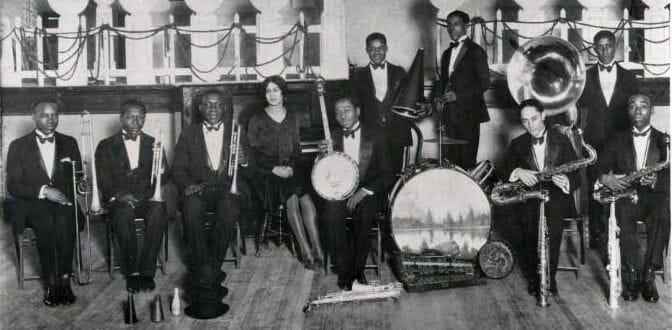
Misconceptions about 1920s Clothes
Before we get to it, let’s first deal with some misconceptions around 1920s style and clothes. Maybe you’ve watched a virally popular video from Glam about 100 years of men’s fashion. While the production crew was excellent, the subject matter, the clothes were mostly inaccurate.
Maybe you’ve watched some gangster movies or maybe Boardwalk Empire, and you think all that men wore back then were pinstripe suits and Tommy guns. No, they didn’t, really. Instead, we promise you we’ll talk about what real men were back then.
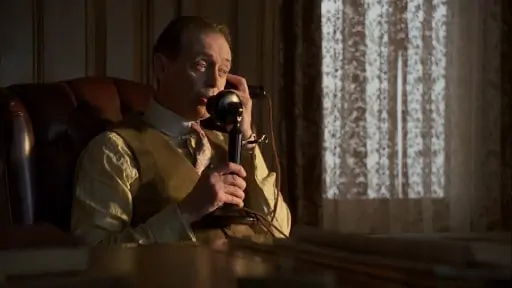
Of course, different countries have different climates and different clothing traditions. We focus here mostly on the US and bring in comparisons to Europe.
Real 1920s Menswear – Jackets: Fitted and Sleek, but Still Heavy
The jackets of the ’20s were cut much more closely to the body to accentuate the natural waist. If you look at them today, they’re much closer to a body coat than a modern suit. The buttoning stance was a bit lower than the 19-teens, and it had about two to three buttons. Sometimes the fronts of jackets were cutaway and probably inspired by morning coats.
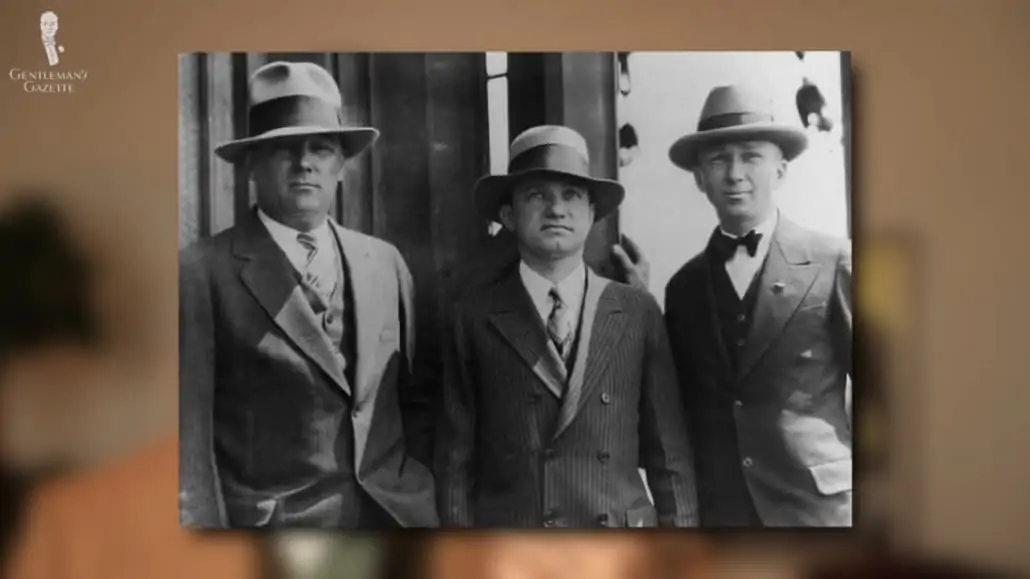
The most popular fabric was, of course, sheep’s wool, but they were a lot heavier than what you could get today, and the finish was a lot coarser.
The jacket body was usually lined in silk if you could afford it, and the sleeves in cotton because you needed something a bit more sturdy in your arms because that’s where you typically wear things out first. Also, because you sweat a little bit more on the arms, things are more likely to get soiled or dirty in that part.
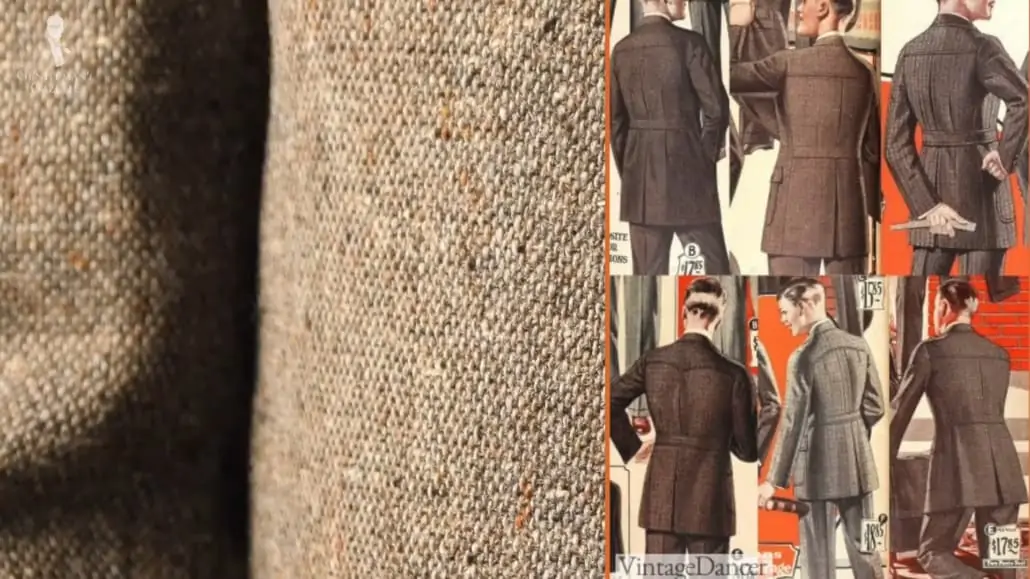
For country wear, tweed was a really popular material. And for summer, you also have cotton and linen suits. For the time, the fabrics were slightly less stiff and lighter weight. But, compared to today, they were still heavy weights.
In the 19-teens and maybe early ’20s, you might have seen jackets that had a bit more of a cutaway front. But, as the decade progressed, they became more closed, which is more in line with what you know from a modern suit. The fronts weren’t fully square, but they were definitely more square than before. Frankly, if you look at those suits, they’re very similar to modern business suits.
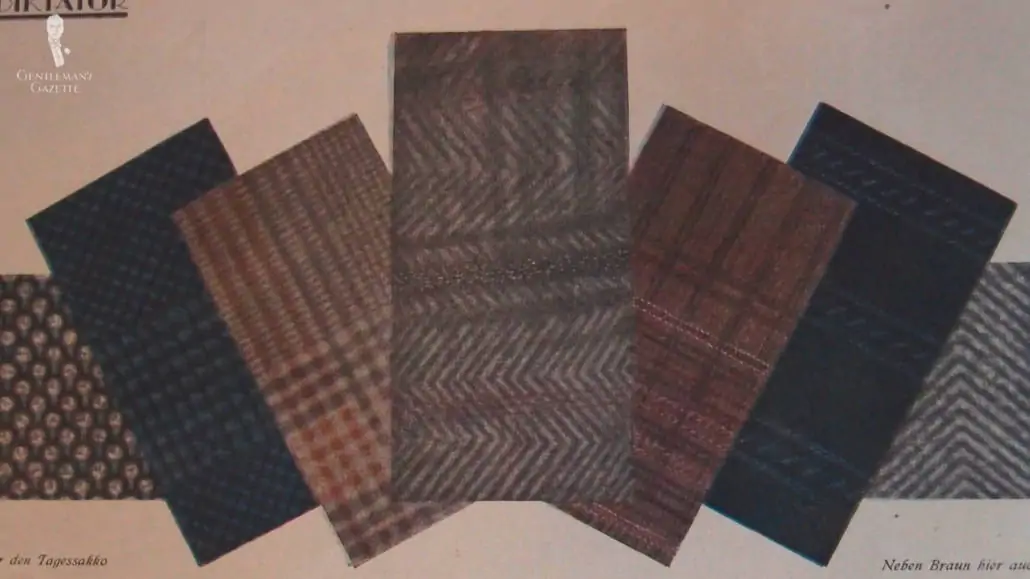
As for patterns, plain, tweeds, smaller micro patterns, windowpanes, and stripes were all around. Subtle pinstripes were particularly popular, which explains their omnipresence in gangster movies.
If you look at their jackets, you can definitely see a higher buttoning point, more around the area of your sternum. While in the early ’20s, the waist was overall much higher, by the late ’20s, you can see a lower buttoning stance and wider lapels, which makes it look more like suits or jackets from 2020.
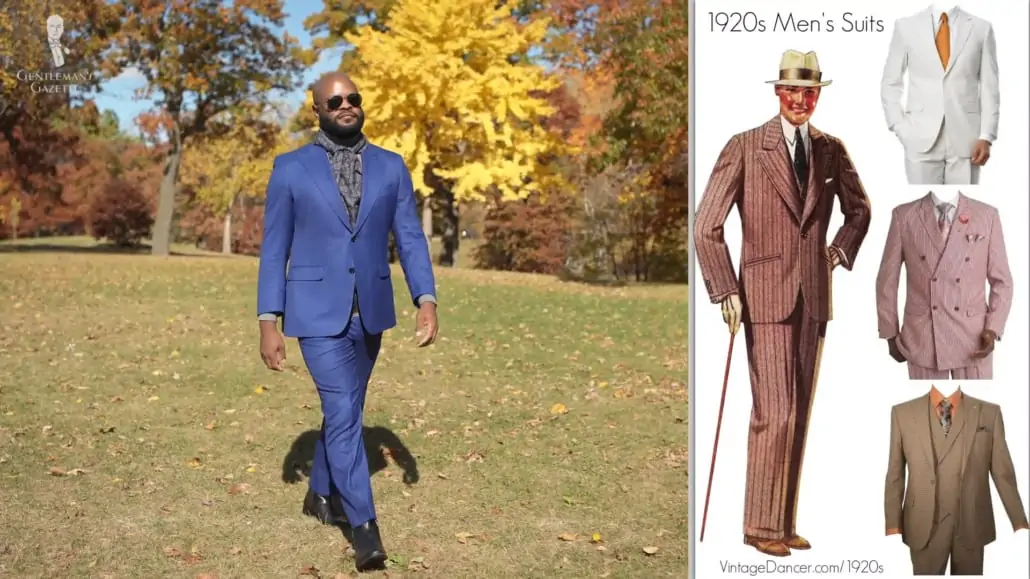
The clothes enthusiast in you will recognize their subtle differences. Just compare the gorge height, the shape of the lapel, pockets, vents, lengths, and fabric, and you’ll see the difference, but Joe Average on the street would likely not spot them.
Typically, the sleeve cuffs at about three buttons were spaced much more widely and more like the 19-teens than they’re spaced today. However, there was no cuff stitch–that was truly something of the Edwardian period.
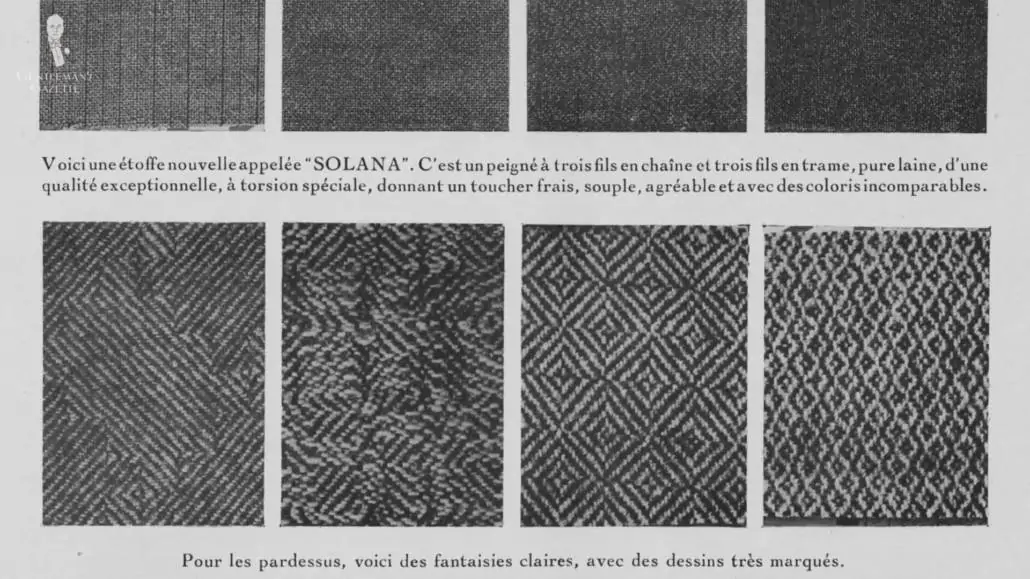
Unlike today, most jackets back then had no vents because they made them look sleeker, even though when you put the hand in your pocket, your bum might have been exposed a bit. Overall, I really enjoy the fabric choices of the decade. They’re often darker, but they have subtle under patterns and different colors, which create this rich depth that is harder to find these days.
Waistcoats and Vests: Now Optional, with a New Cut
Waistcoats or vests were no longer mandatory in the 1920s, and you could see men out and about skipping them altogether. That was especially true during the summer months. If men still wore waistcoats, they were typically cut lower.
Remember, in the 1910s, they were cut really high. In the ’20s, you would see more the V, more the tie, and more the shirt front. The waistcoat’s bottom also started to create longer, pointier tips, which led to leaving the bottom button of the waistcoat undone. In the US at the time, though, men might not have caught on to that fashion yet, and buttoned their waistcoats all the way down.
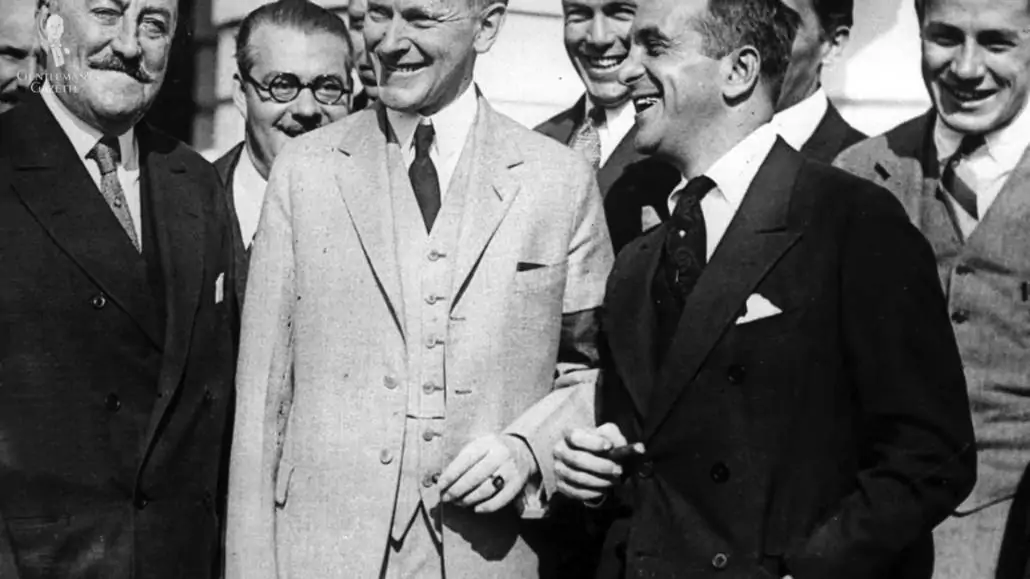
Overall, if men wore vests, they matched the suit, so you had a proper three-piece suit. But, you could also find odd vests, which just create a slightly more casual look.
As you know, I’m a big fan of waistcoats and vests, especially odd ones, because, with very little money, you can make an outfit look completely different, and if you want to learn more about that, you’ll surely find our guide to wearing vests enjoyable.
Trousers: Still Slim Overall
Starting in the 1900s in America, the belt had become more popular, taking over from side adjusters and suspenders. Across the pond in the UK and most of Europe, suspenders were still probably the number one means to keep your pants in the proper position. Nevertheless, belts were catching on there as well.
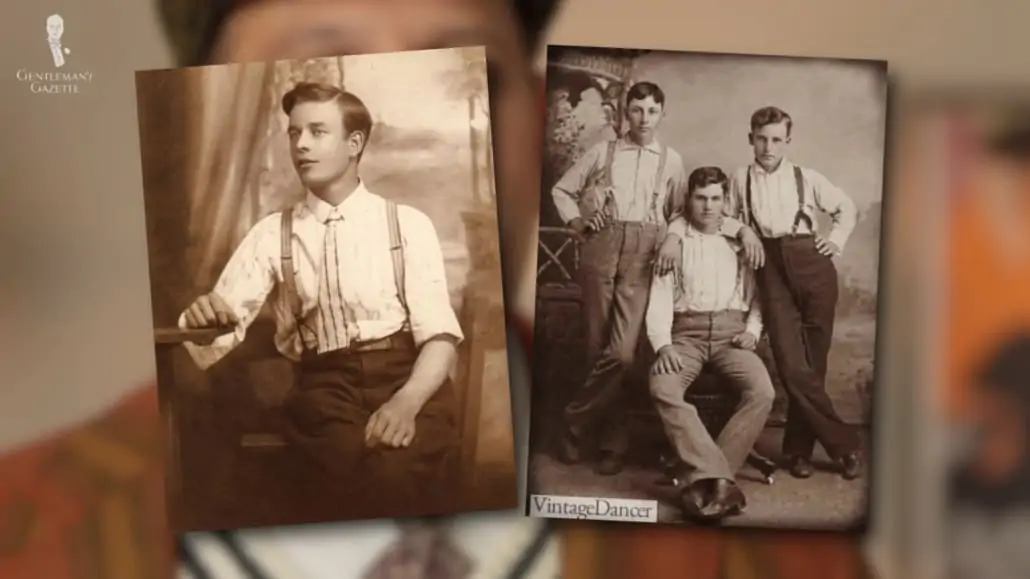
At the start of the ’20s, trouser fashion was still heavily influenced by the Edwardian era “drainpipe” fashion with very slim and tapered towards the bottom. But, remember, they didn’t have pleats. But, in the mid-’20s, you actually started seeing single pleats in pants.
The idea was to help with a drape of a pressed trouser leg. Because, as you know, when you have a nice crease, and you wear it, and you sit, that crease becomes less pronounced. By having a pleat, you have a nice crease for a longer time, making everything look better.
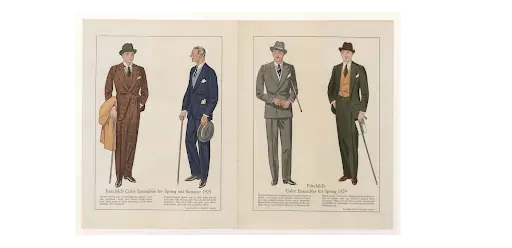
If you look at the cuffs from the period, they were neither very slim nor very tall. They were relatively modest. I would guess between one and one and a half inches. Towards the end of the decade, trouser legs had gotten a little bigger at the bottom but were still quite tapered.
Later in the 1930s, you’d see more pleats in trousers and a much wider leg, which transitions us nicely to Oxford bags.
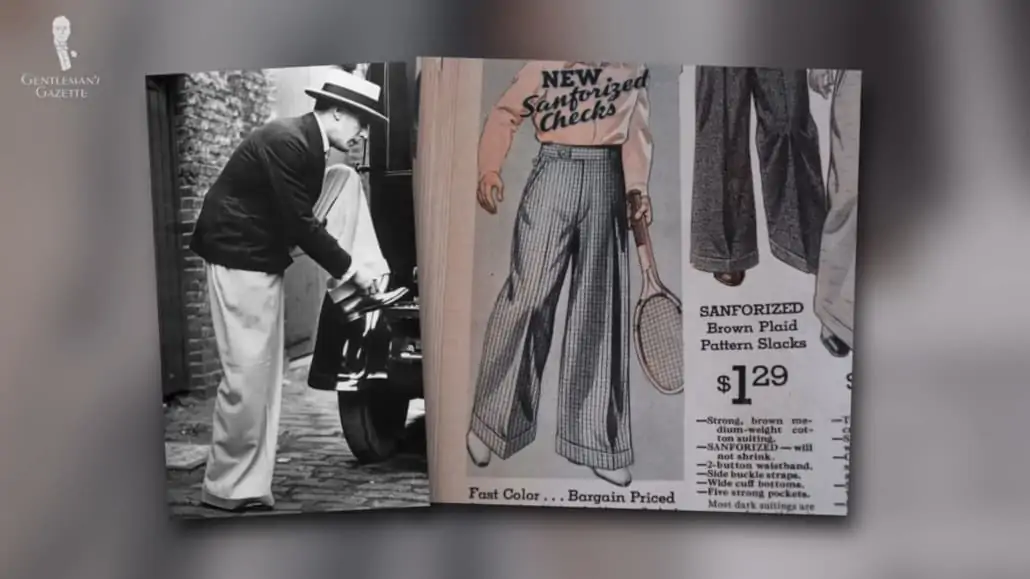
The vintage enthusiasts among you may be familiar with this trend of students at the University of Oxford wearing excessively wide trousers, starting in the mid-1920s, even though you can find plenty of pictures of impressively baggy Oxford bags out there. In the ’20s, they were typically around 23 inches. This all continued thereafter into the 40s and 50s.
I think the biggest pant leg I’ve seen was 43 inches. I mean, at that point, you might as well just wear a skirt or maybe a kilt!
The “Jazz Suit”
Another popular style of the 1920s was the so-called “jazz suit.” The very defining features were their very slim silhouettes and very high waists, with the idea to give you the ultimate hourglass shape.
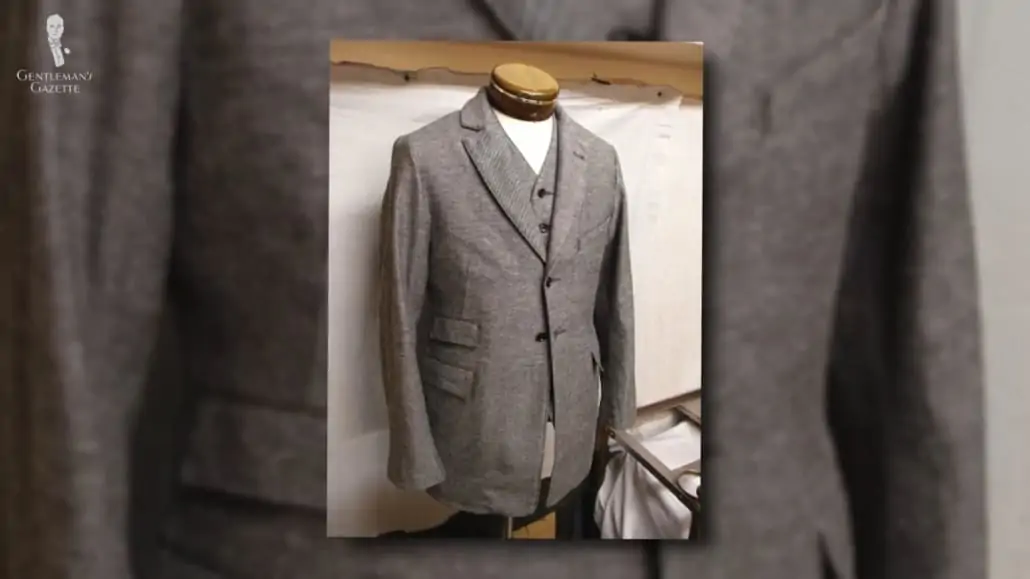
At the time, these were novelty suits marketed to young men and worn by young men. Often, it had slanted pockets, which created a certain dynamic that was pretty much in line with the hourglass shape. Of course, they had more darts to get this really suppressed shape. Sometimes, they even had belts like a Norfolk jacket, which would help you accentuate the waist even more.
Shirts: Becoming Softer, with More Attached Collars
In terms of day shirts, the ’20s weren’t too dissimilar from the 1910s. Overall, you could still find detachable collars. Typically, older men or upper-class gentlemen would prefer them. Younger men would want the softer turndown collar. Sometimes, also an attached one.
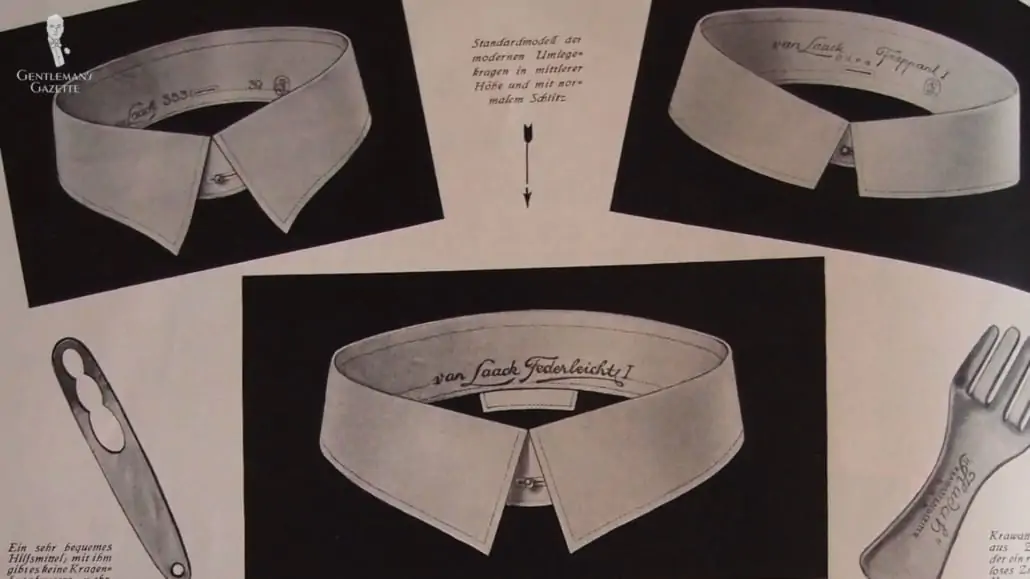
Cuff-wise, you had single cuffs for cufflinks, French cuffs or double cuffs for cufflinks, and single barrel cuffs that were buttoned with buttons. Some men still wore starched bib fronts that were attached to shirts, but they were nowhere near as popular as they used to be in previous decades.
While in Europe, you could still see many detachable collar shirts, in the US, men preferred a shirt with an attached collar and an attached cuff and attached bosoms, and it was overall a more casual shirt. But, it was much closer to the shirt that we were today than the previous decade. Even for Joe Average, it was now affordable to get a striped shirt where everything was attached.
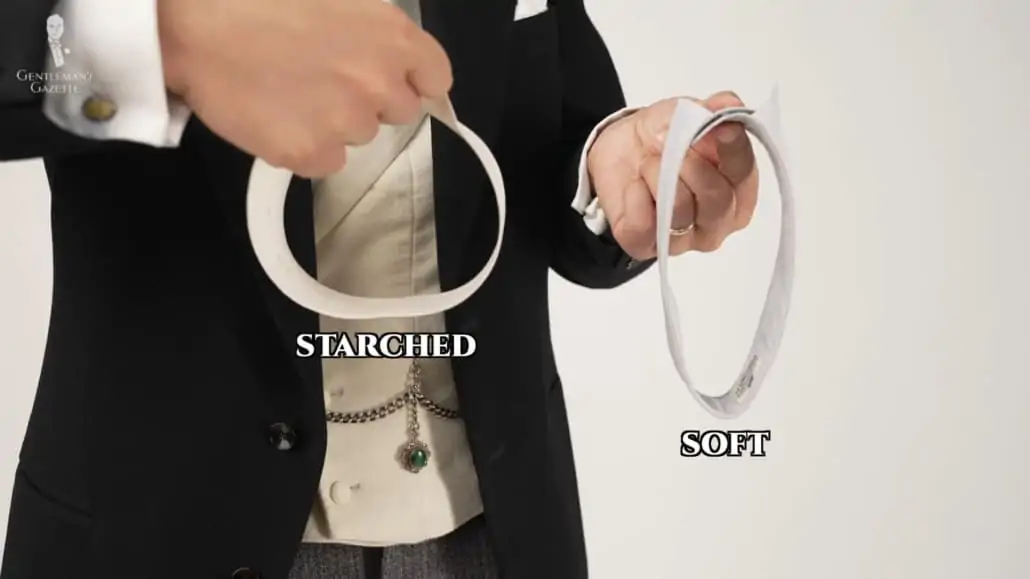
The collars, especially the turndown ones, were not as high as in previous decades. So, previously, they were heavily starched and polished. These modern collars were not starched, were made out of the same fabric as the body, and they had longer tips that were, of course, a lot more floppy because there was no stability from the starch. You also had a trend of the soft collar.
You could also find detachable soft turndown collars, and sometimes they were made in the same fabric as the shirt, or they could be contrasting.
If you’ve watched shows set in the 1920s like Boardwalk Empire, you see that many men wear these collar pins and collar clips. Men still would wear them with ties, though, so the collar clip became really popular. It held the collar tips down, elevated the tie knot slightly, and, overall, it was just a fashionable look.
Personally, I think it’s a very stylish look that is different from what most men wear today. And if you’re interested in it, we have a great selection of those in the Fort Belvedere shop.
Footwear: Dress Shoes Are The Default
In terms of footwear, boots were slightly less popular in the 1920s than in the 1910s. Streets had gotten better, there were fewer horses and less manure on the streets, so it was okay to just have regular Oxfords or brogues or, for that matter, spectators.
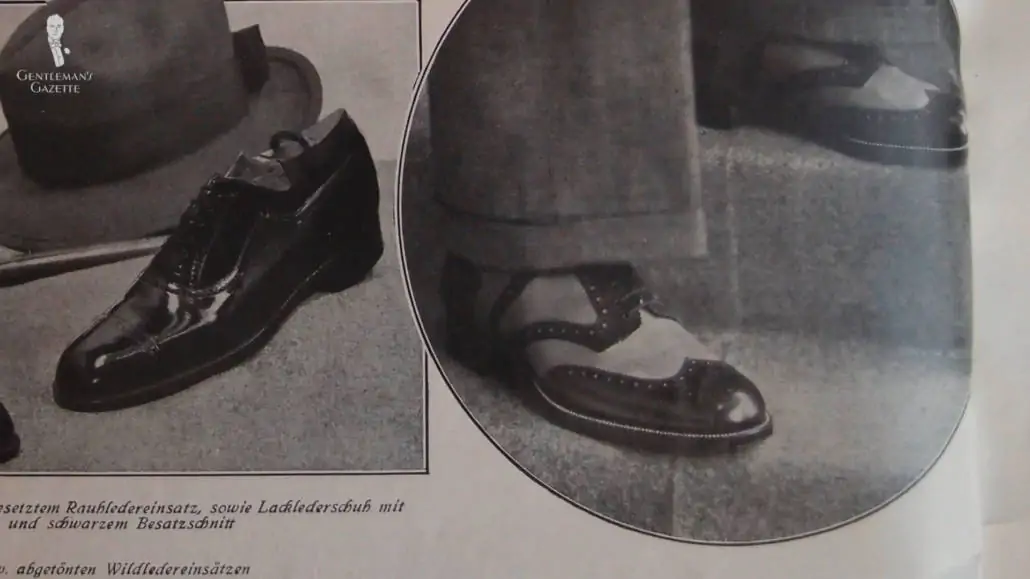
Two-tone shoes were definitely more popular than they are today, but it’s not like every man wore them. If you just look at their style, you’ll think, “Oh, they wear Oxfords. We wear Oxfords!” But, if you go into the details, you can see they had a higher heel, and the toe had typically a more rounded shape.
Also, the broguing was sometimes a little smaller, the stitching was a little neater, and vintage shoes, overall, were a bit different than what you see today.
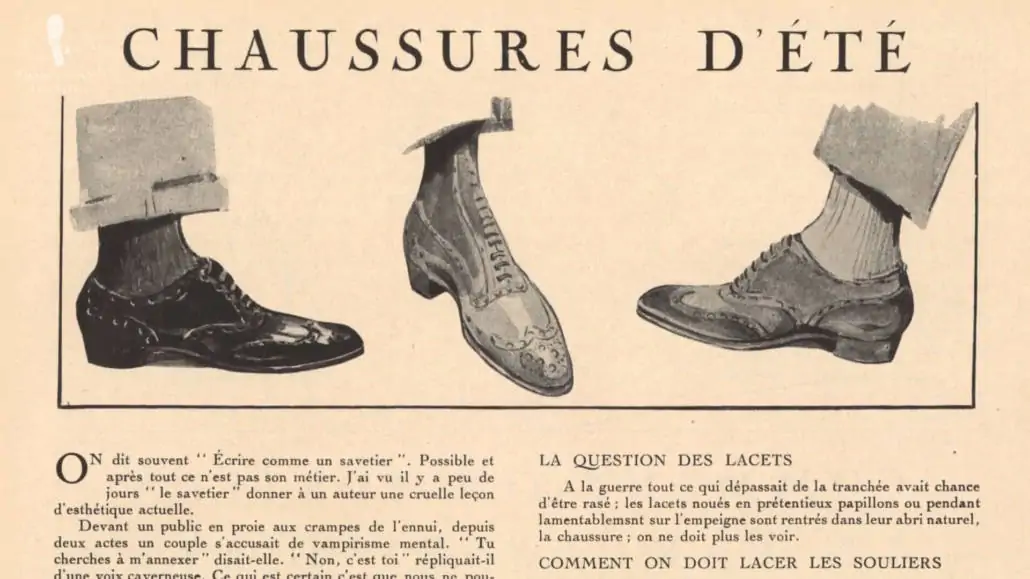
The quality of shoes the average man wore was a lot higher back then than today. Most men would still wear dress shoes, there were no real sneakers, and production happened in the US or Europe. We didn’t have this globalized economy quite yet, where we could make really cheap shoes in places.
Even though rubber sole shoes date back to the 1870s in Britain, “Chuck Taylors” or Converse All-Stars were invented during the 1920s.
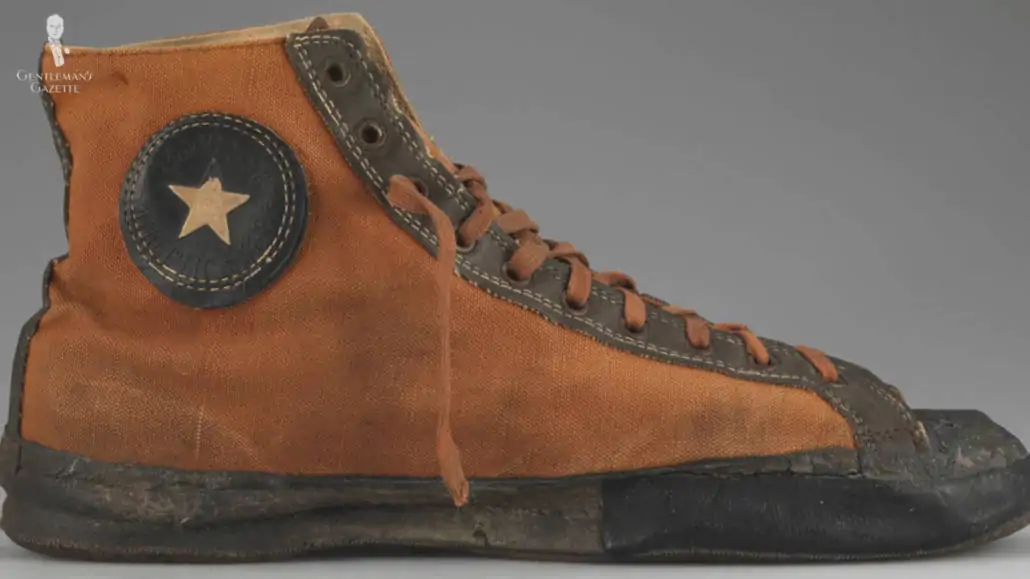
A lot of people look at Chuck Taylor’s All-Stars as an all-purpose shoe today. But, back then, it was specifically designed for basketball. It was supposed to be more flexible in the ankle and prevent skidding or sliding around when playing the sport. Most men would not have worn those shoes on the street just to walk around.
Headwear: The Fedora Gains Popularity
When it comes to headwear, the 1920s were still quite interesting for men because most everyone wore them. Hat styles hadn’t changed much since the Edwardian era, and you still had people wear top hats sometimes. Even the bowler hat was still worn. Of course, more so in England than in the US.
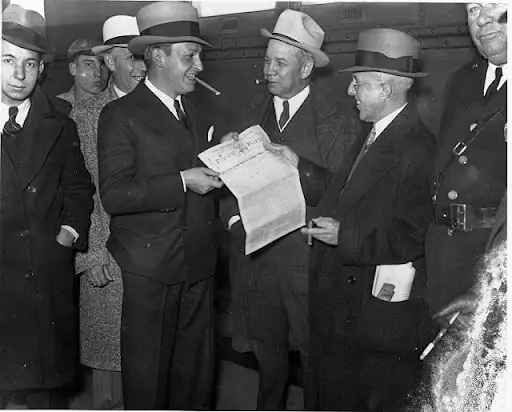
The most popular hat of the decade was definitely the fedora. While most people today would look at a man wearing a fedora as being quite formally dressed, at the time, the fedora was a casual alternative. It had a snap brim because the felt was soft and not stiff and starched. It was much floppier and was crushable, and you could adjust the creases, which made it popular back then.
Even though you can still find fedoras today, 1920s fedoras typically had narrower or shorter brims and higher crowns. Regarding the hatband, they were often quite wide, and regular working-class men wore them on an everyday basis.
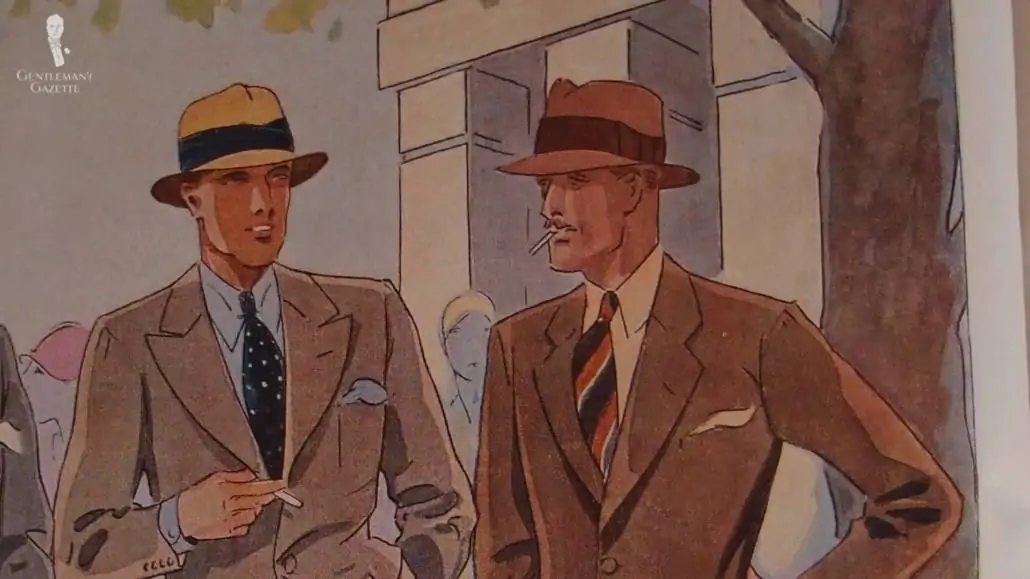
Looking at all the photographs from the 1920s, you can see that the shape of each fedora is slightly different because a man individually shaped it. It wasn’t just a factory shape that you got and wore that way. You just made the hat and its particular style your own.
Another casual hat was the flat cap. Unlike what you see on Peaky Blinders, not all flat caps were 8-piece ones with a wide brim.
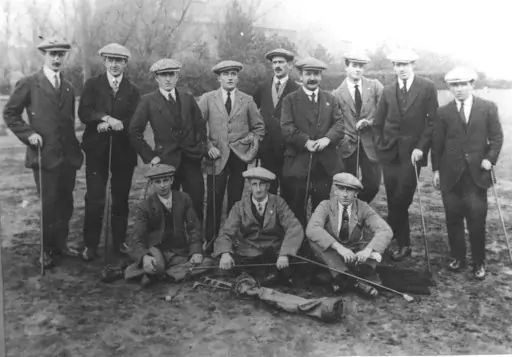
The most popular style was the pancake-like one-piece flat cap, which means it was round and flat on top, and it was also a bit wider and more like a beret than what the same style of the flat cap would look like today. It came in many styles, including tweed, wool, linen, cotton, and many different patterns such as houndstooth, Prince of Wales check, Donegal tweeds, and so forth.
Facial Hair: On The Decline
So, what about 1920s facial hair, you might wonder? During the Edwardian and Victorian eras, a mustache was the height of manliness.
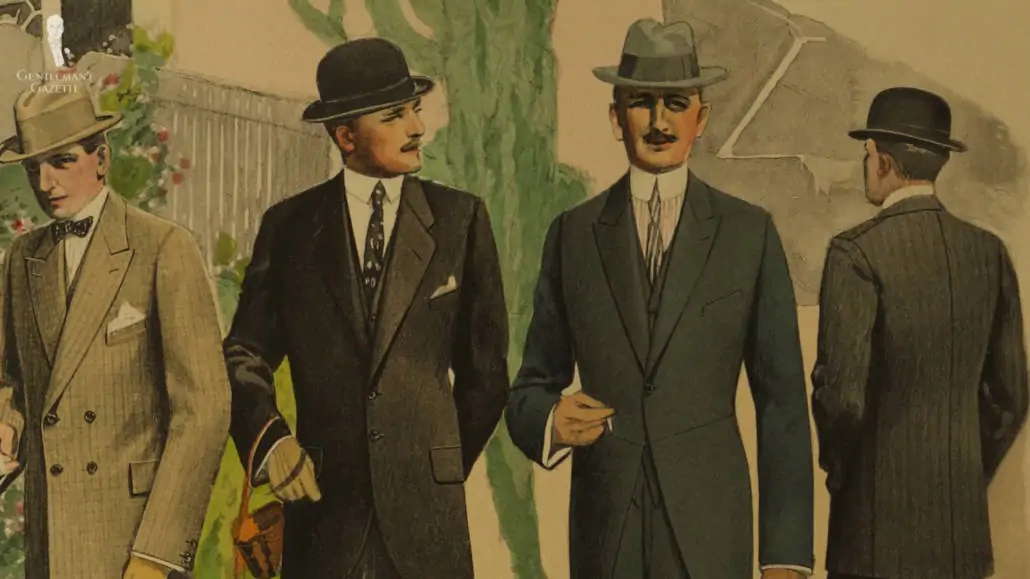
During World War I, toxic and lethal gas was used like never before, and the Piccadilly whisker was often in the way of putting on your gas mask quickly. So, it wasn’t as popular anymore. Similarly to 2021, having a beard really impedes wearing masks effectively. Because of that, soldiers were told to shave out their beards so that the gas mask would work more efficiently.
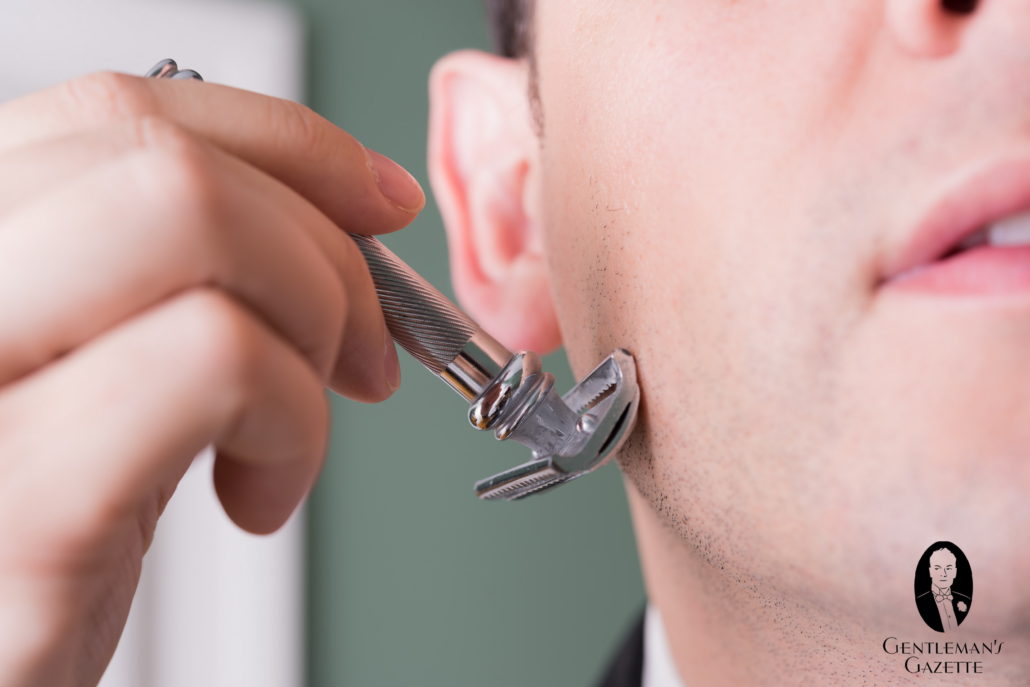
So, when men returned from the war and settled back into their lives in the 1920s, they were used to just shaving every day and not having any facial hair. If men wanted facial hair, you saw a little mustache. But, you didn’t see much hair on your chin, which was typically something only worn by older men at the time.
Accessories: Often Fashionable and Functional
Canes
Today, if a man has a cane, it’s typically for practical or utilitarian purposes. In the ’20s, though, men would carry canes for decorative purposes. It truly was a fashion item and, of course, it had to have the right length. Some were flexible, others were stiff, and some had elaborate decorations, maybe built-in flasks, knives, and so forth.
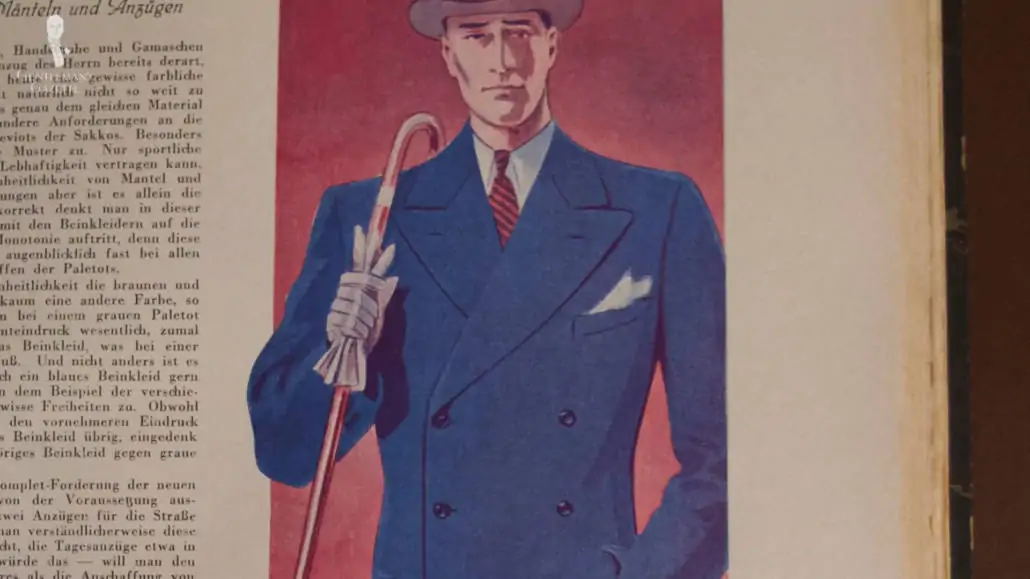
Pocket Squares
Regarding pocket squares, the mass manufacturing of items allowed the introduction of silk pocket squares to a broader range of men. So, they no longer had to wear just plain white cotton or linen squares. They could have printed silk squares.
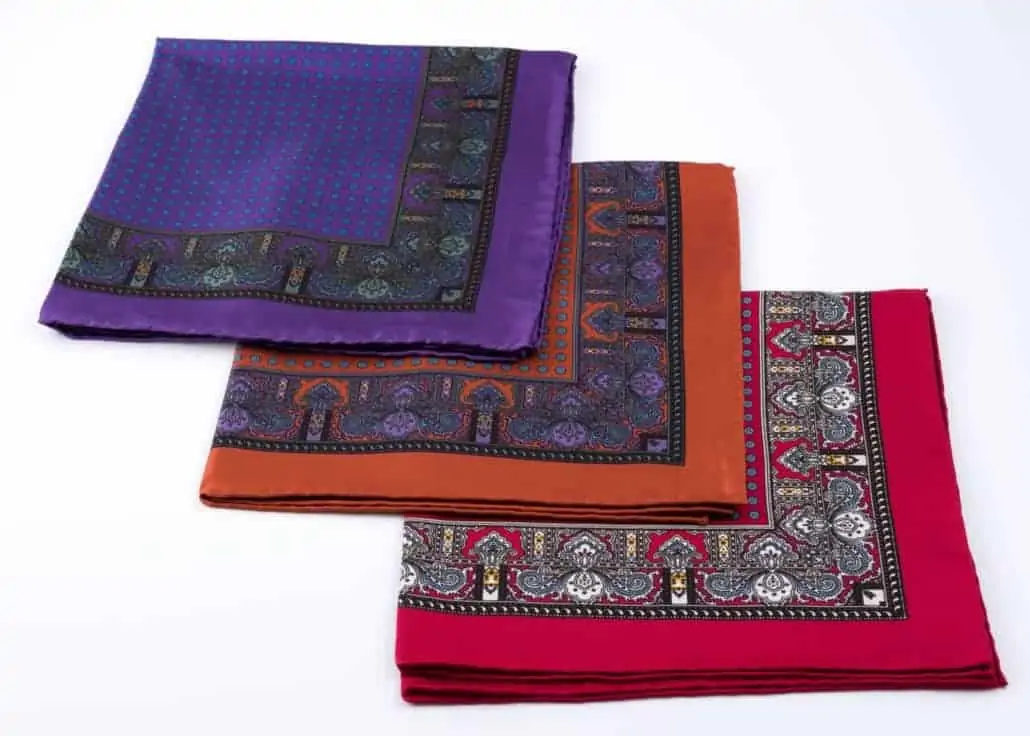
Timepieces
When it came to timepieces, the pocket watch with the watch chain was still popular, but wristwatches definitely gained ground. And it makes sense as men wore fewer and fewer waistcoats, there was not a natural spot for their pocket watch, so they just wore a wristwatch instead.
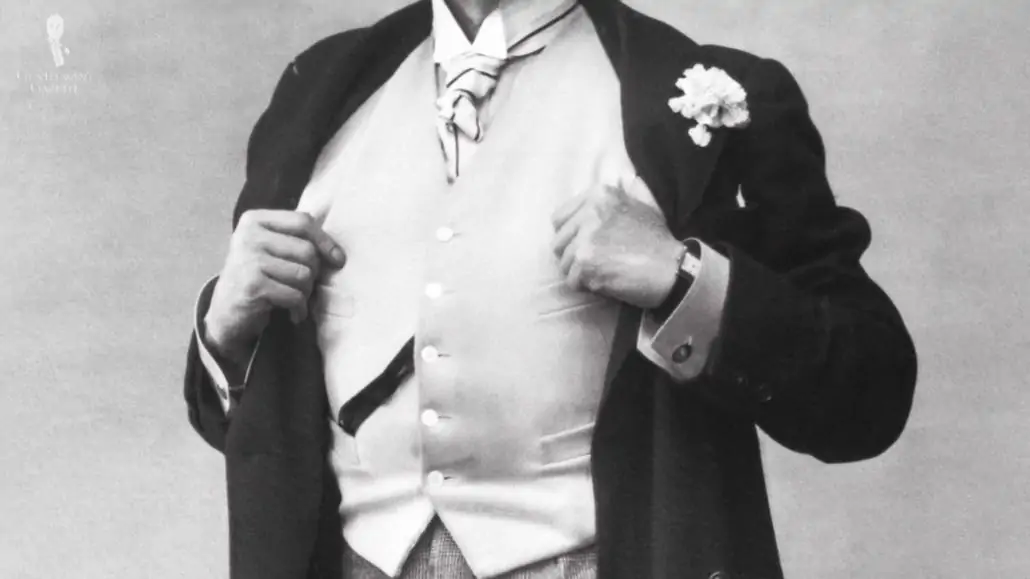
Eyewear
In terms of eyewear, the invention of celluloid really helped to create more styles than, let’s say, during the Edwardian era. Celluloid originated in 1856, as one of the earliest thermoplastics.
While it was first used for film stock, it was later utilized to replicate tortoiseshell, ivory, or horn products. That meant that even the working-class men could get the latest-looking style without having to shell out the big bucks that they previously would have to spend.
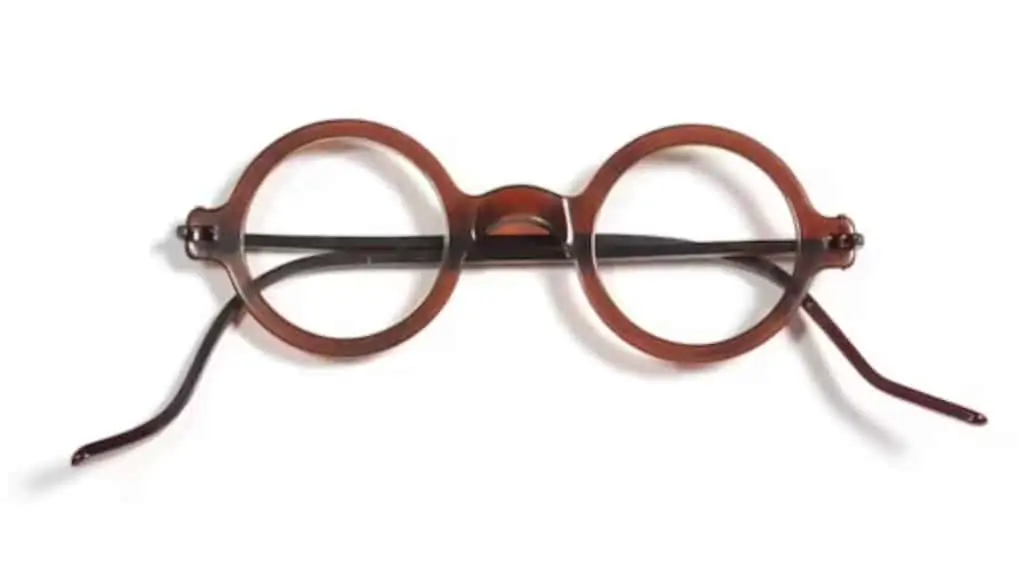
It was really much like the trend of gold-filled or rolled gold jewelry, which looked like a solid gold piece, but it was a lot more affordable even to the average man. Of course, you could still find wireframe glasses, sometimes even covered in celluloid. But, you could also find frames that were fully made from celluloid itself.
The actor Harold Lloyd was known for popularizing the imitation celluloid glasses that looked like horn or tortoiseshell.
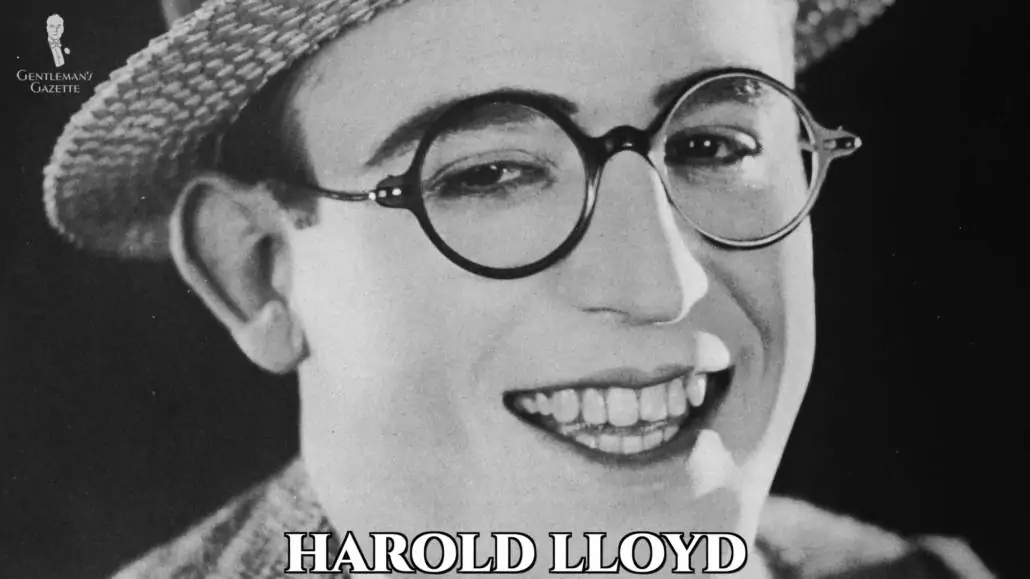
Neckwear
When it came to neckwear, ties and bow ties were still popular in the 1920s. Compared to the previous decade of the 1910s, bow ties had gotten slightly bigger. Also, because the collar of the shirts had become softer, it was easier to tie a tie yourself.
In a previous decade, you could have still found more clip-on ties or pre-tied ties because it was harder to put them on in a stiff collar. But, now, with a softer collar, it was easy-peasy.
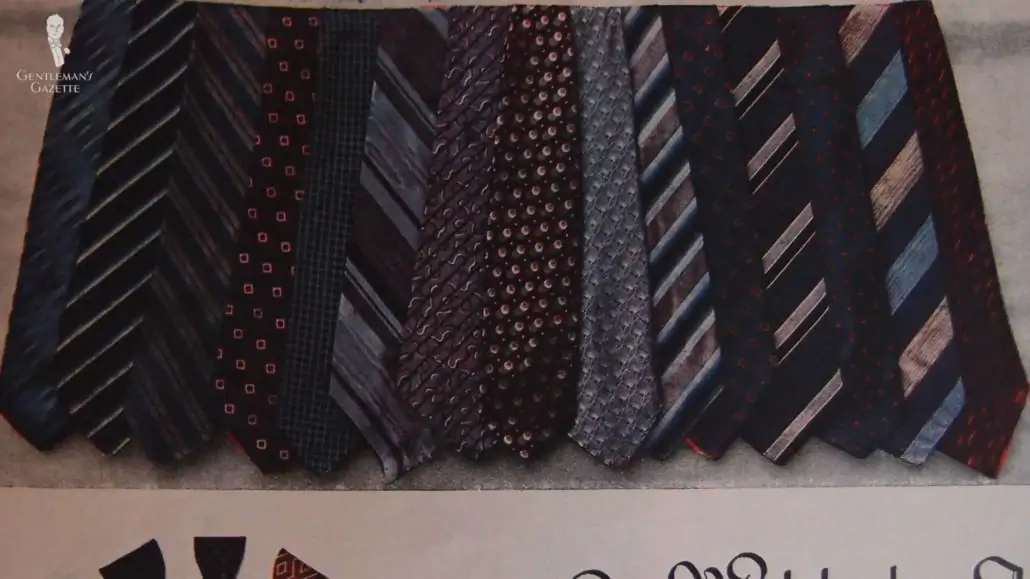
The style of the tie changed sometimes and looked more like a modern knit tie with a solid width or just a slightly more graduating width because, again, it was easier to tie them.
Overall, ties looked less like a cravat from the previous decade and more like the tie you know today. That being said, ties back then were much lighter in construction. They often had no lining or were very lightly lined, and they were also, again, shorter than ties are today.
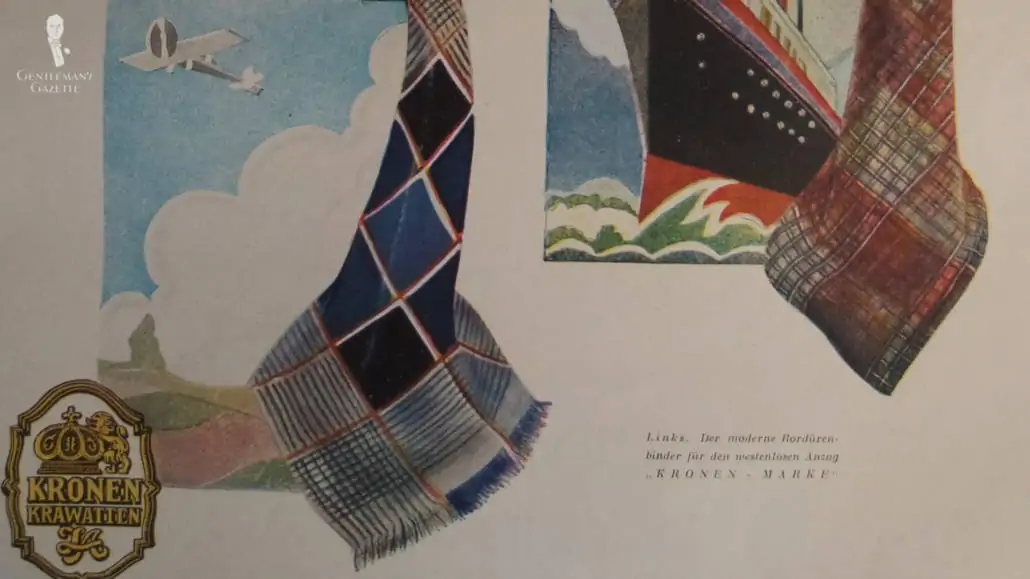
Interestingly, ties often also had unfinished edges on the blade. And it wasn’t until the mid-’20s when interlinings became somewhat more popular or introduced into tie production. Style-wise, ties were bold, colorful, and interesting.
In the ’20s, there was also a boom for the regimental or club ties. And if you think about it, it made sense. There was a void left by the end of active service, and by being a member of a club or having some association, you felt like you belonged to something.
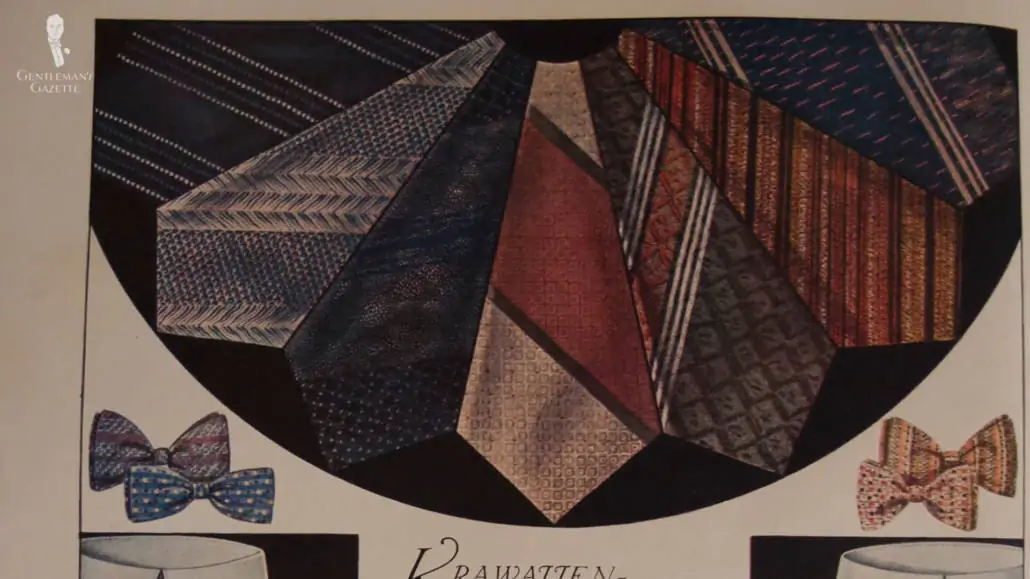
Formal Clothing: Black Tie Comes Into Its Own
Morning Wear
The rules were well-established in terms of morning wear by 1920, but they definitely declined in popularity. The full morning code outfit was worn for celebratory or special events and not for a regular business Tuesday.
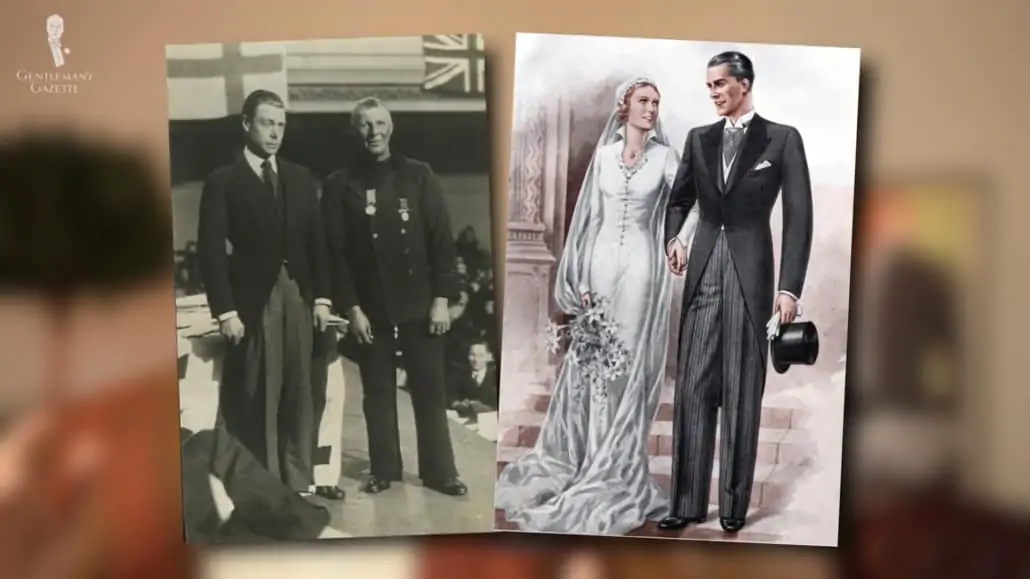
There was a slight change in style in previous decades. You saw morning coats that sometimes had two or three buttons. And now, you saw more one or two-button morning coats. Also, previously, you might have seen solid pants or maybe glen check pants. At the time, the striped pants with morning wear were solidly established.
Evening Wear
In terms of evening wear, White Tie was reserved for galas, dinners, or special occasions. At the same time, Black Tie was quite a bit more popular. As it was still in somewhat of a transitional period, you would often see the Black Tie ensemble being worn with a stiffed evening shirt, previously one with White Tie, and likewise, the Marcella starched waistcoat.
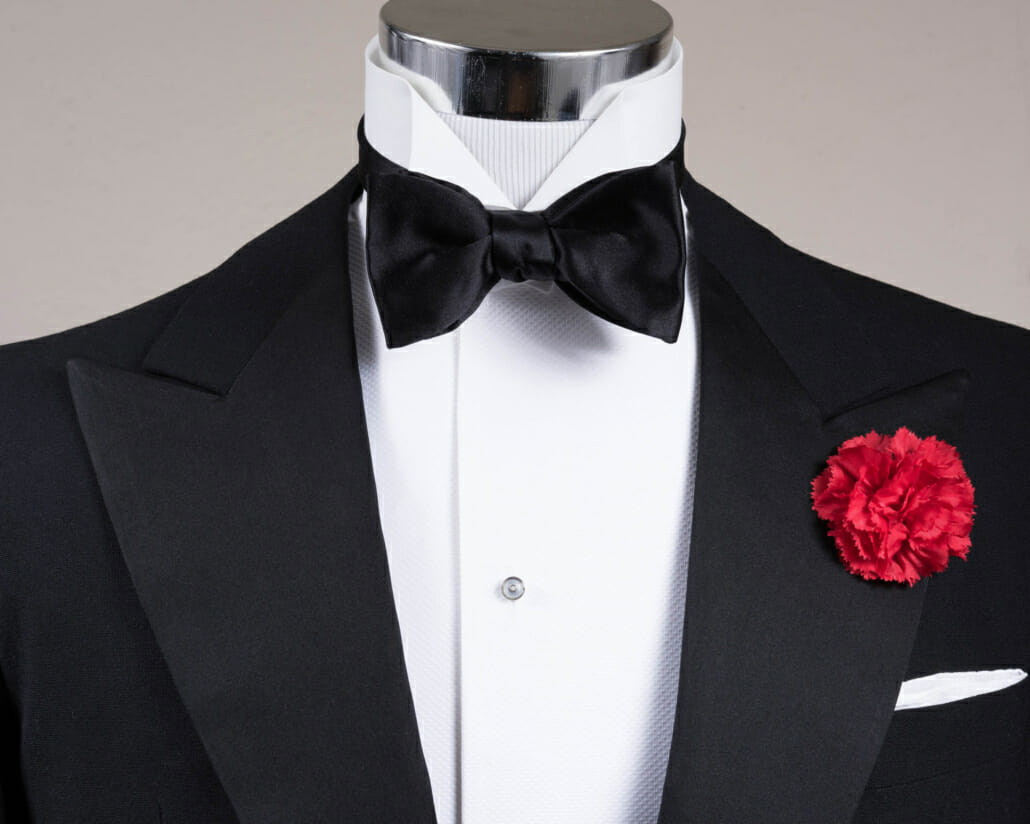
Conclusion
Overall, the ’20s were a lot of fun, and if you like the style, I suggest you check out the series Babylon Berlin, which is a German series. And it’s not all accurate, but it has some cool styles as well. It also goes beyond the stuff you might have already seen.
Outfit Rundown
I just chose an outfit that was inspired by the 20s. It consists of a white shirt with a barrel button cuff, kind of a darker tie with a micro pattern in silk, a tennis sweater in off-white with dark navy elements on the v-neck, the bottom, and the cuffs.
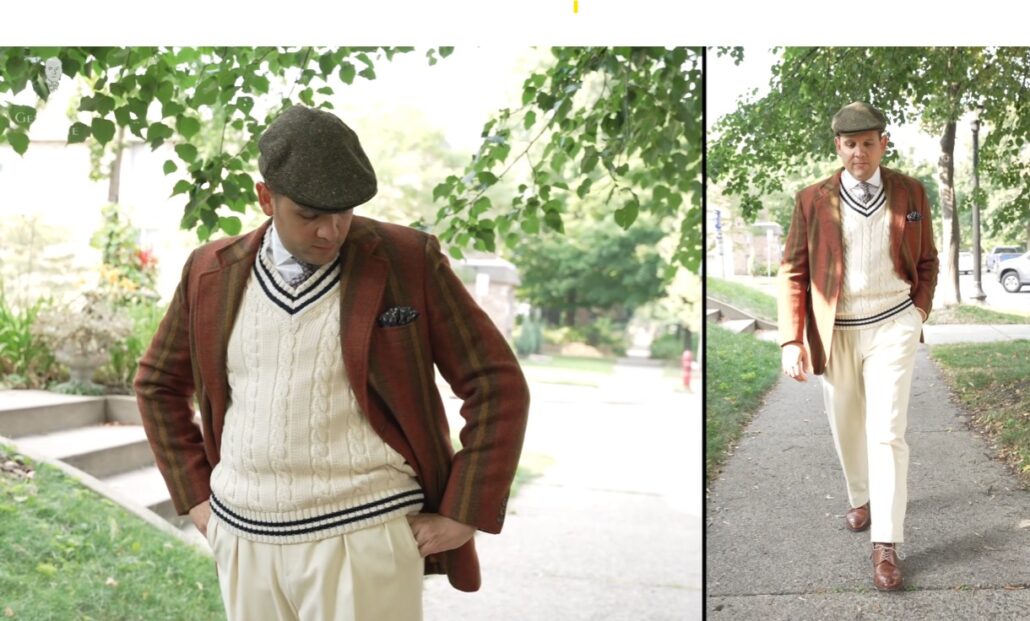
I mean, without the jacket, people play tennis in that. Can you believe it? The tweed jacket is orange and it has stripes in green and yellow. It’s very bold and fun. And I thought it worked well with my white flannel trousers. In fact, they’re more off-white. As you know, I’m a fan of pleats. So, I have two pleats, which again is not quite 1920s. But, a single pleat would have been definitely 1920s.
My cuffs are maybe a little bigger than in the 1920s, but I wear a pair of leather shoes. Here, they’re full-brogue derby shoes. I put in contrasting shoelaces to just pick up the lighter-colored theme. My socks are orange and blue from Fort Belvedere, they pick up the color of the jacket.
You can find them in our shop, just like the silk wool pocket square, which is blue with green and off-white micro patterns, trying to tie the entire outfit together with the colors I chose. Last but not least, I have a flat cap, one piece. It’s a modern one, but it has a nice Donegal tweed that picks up the oranges and the greens.
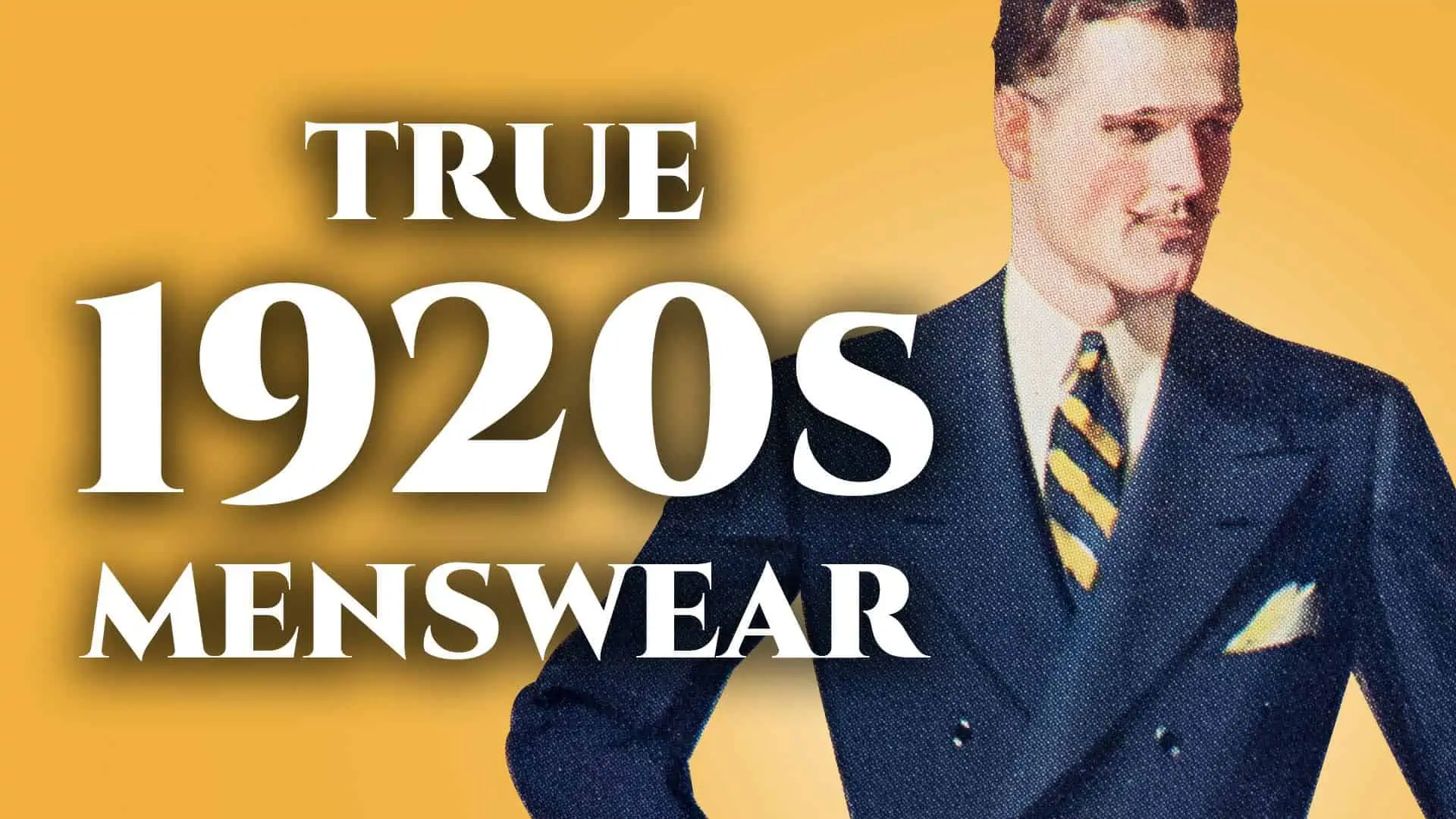
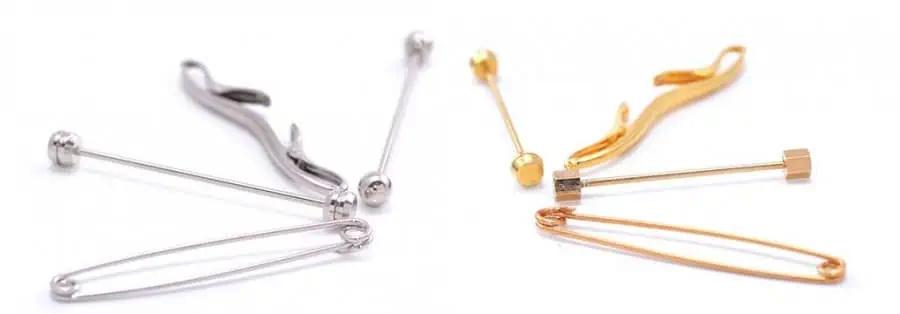
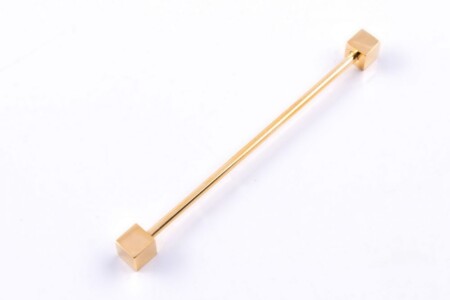
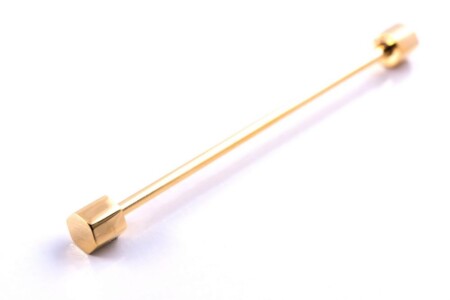
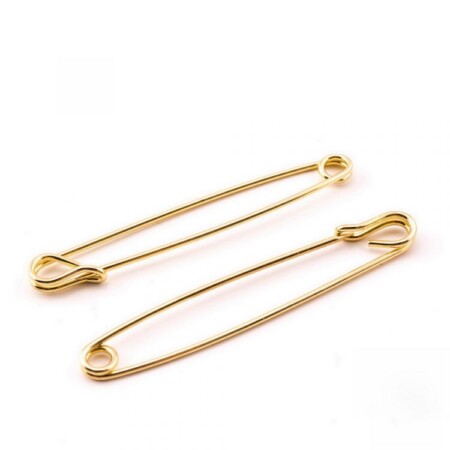
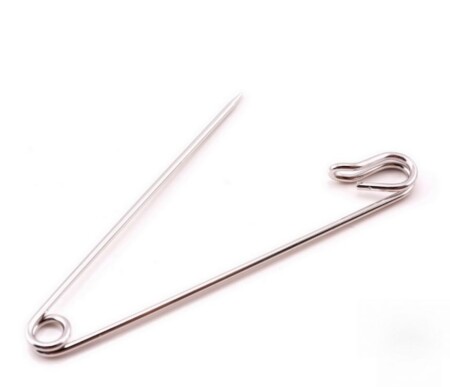
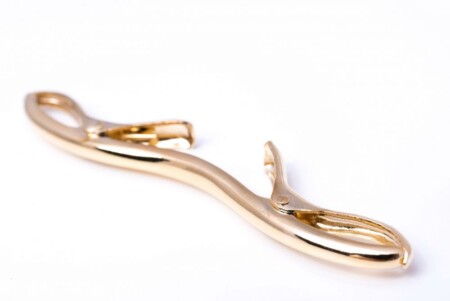
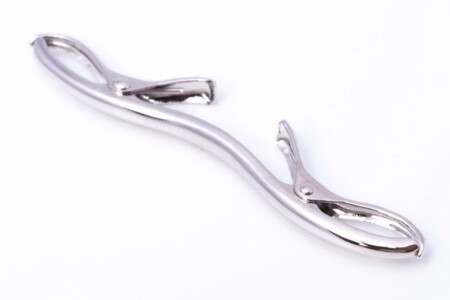
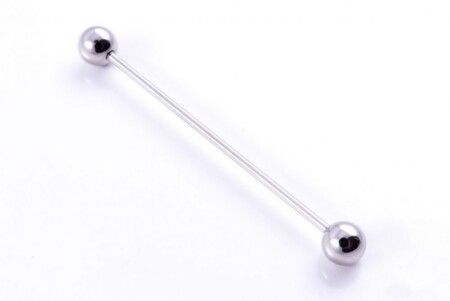
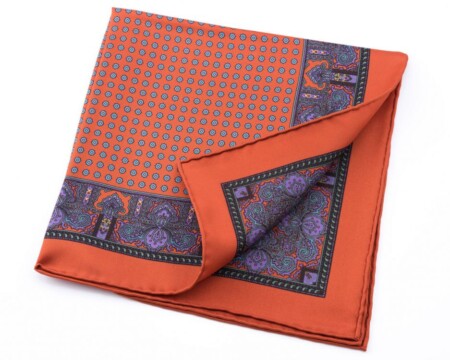
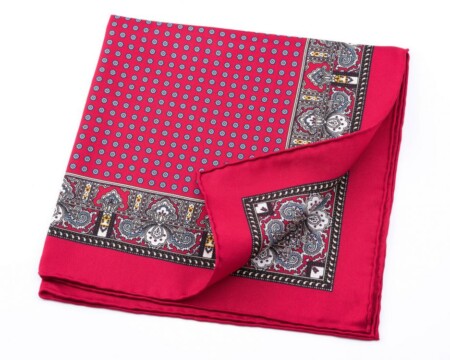
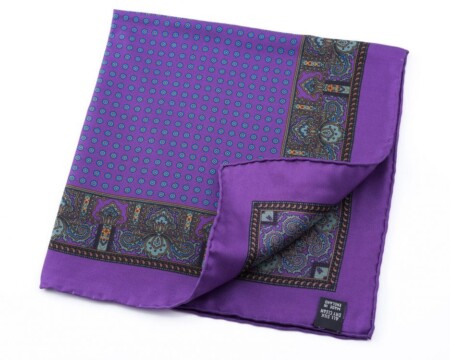
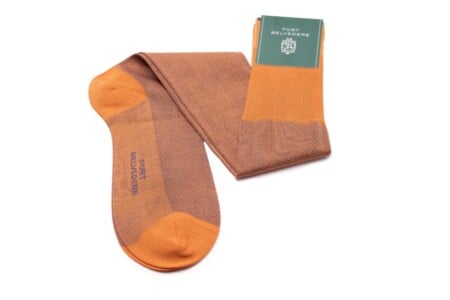
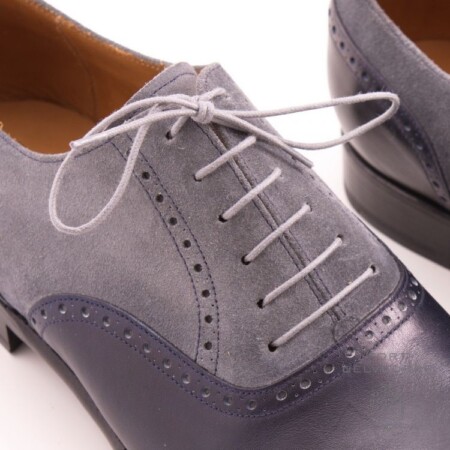
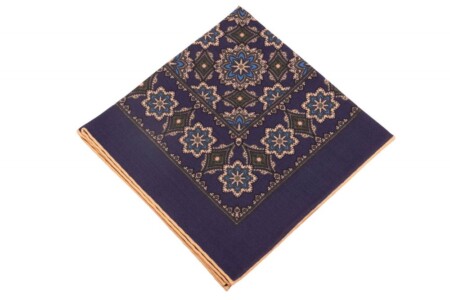
Please can you explain all the gentlemen carrying gloves and not wearing them?
My friend, your knowledge is truly astounding. thank you.
I would wear the Thompson submachine gun. It comes in handy when one is trying to get the agreement of his fellow man. Further, it significantly cuts down on rejections to one’s social overtures. Additionally, it works in both formal and casual dress environments.
The brown of the walnut stock and the bluish-gray finish on the metal bits do go quite well with all the other classic menswear colors. Bonus points if you also rock a proper 1911, but make sure you keep your metal similarity in mind. A nickel-plated 1911 would clash with the blued metal of the Thompson.
You say the vest was on it’s way out during the ’20’s so why did “The Untouchables” always wear them on the old TV show? Of course the cut was a bit more modern but they kept the essence of the style. Also the flatcaps were brought into notice by the “newsies” on the big city street corners selling the latest editions. If you’ve noticed in old photos and even in period movies most of the people wearing them wore them slightly on the side like the afore mentioned beret. That was because, during that particular time, most newsies were from poor immigrant families who had to wear their fathers hats which were obviously too large so they hung down to the side. This would eventually become a huge fashion statement for most men for years to come.
Hi Don,
The style in “The Untouchables” would have been ’20s and ’30s style from the point of view of the late ’50s/early ’60s. Much like our Menswear Expert Reacts series for other period pieces such as “Boardwalk Empire” or “The Godfather”, the historically accurate style becomes mixed with a contemporary aesthetic.
Thank you for the additional bit of information regarding the jaunty flat cap trend!
Nice job Raphael – very interesting…
I think an updated “Oxford Bag” look with a 20″ bottom, 13/4 to 2 ” cuff single pleat would be interesting.
Looking forward to a update on the 1930’s, my favorite era…( ex “spearpoint” shirt collars and too short/wide ties )
Best/JL
Oxford Bags, the original JNCO jeans.
I much prefer ties w/o (or with only light) lining… softer to wear, classic style… outside of knit ties, I find no-/light-lining ties hard to find today. Any plans to add these to the Ft. Belvedere line?
I once stumbled onto a 1920’s tie and always wondered why the edges were unfinished. I wore it anyway. I am a short man and the length was just about right. Loved that tie.
Excellent job on this site! I wish so much people would dress with some self respect. So many don’t dress up for anything anymore. Church, weddings, the theater. It’s crazy. The pendulum has swung way too far to casual wear., I always wear suits, ties, wingtips, cashmere sweaters in the winter and always a nice watch. Keep up the good work fellas!.
Thanks, Richard! You’ll be glad to hear we’ve got some more wristwatch content coming soon – stay tuned!